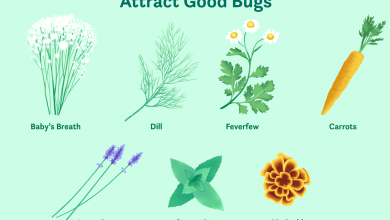Aphids: Complete Guide to Aphids on Plants
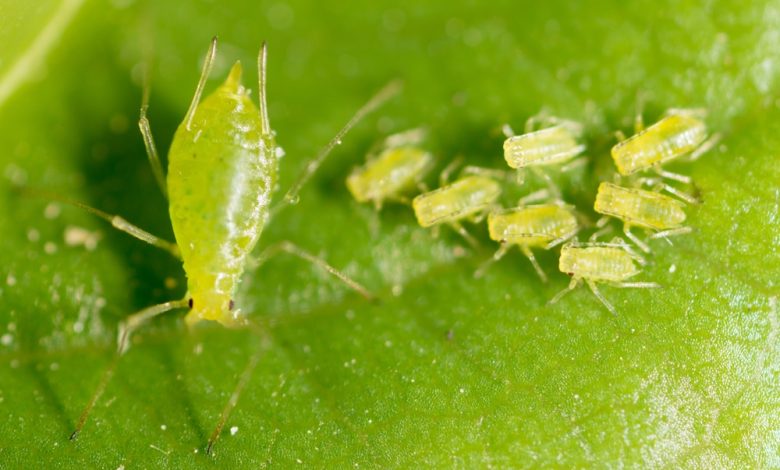
The months of May and June are always accompanied by surprises in the garden, including our friends the aphids. However, what exactly do we know about them? Do they grow all the time on the same plant? Do they change colour? How long do they usually live? How can we control them? Next, we will try to answer all those questions about aphid pests on garden and orchard plants.

APHIDS ON PLANTS
They may always seem the same to us, but there are more than 900 species in Europe and some 4,700 species worldwide!
Aphid damage to plants
Aphids feed on the phloem sap of plants (that is, a liquid rich in sugars) using their biting-sucking mouthparts. These bites cause leaf curling. On some occasions, aphids can also transmit viruses from one plant to another. The main symptoms that we can observe are yellowing or the appearance of small mosaics on the leaves.
As we have told you in other articles, aphids have little tubes at the end of their body called “cornicles” or “siphons” through which they excrete a sugary substance known as “molasses”. The molasses can, in turn, cause indirect damage to the plants since the ants, in exchange for protecting the aphids (from ladybugs, for example), feed on this substance.
On the other hand, it can also cause the appearance of sooty mold, a fungus that is harmful to our plants. As a curiosity, I would like to tell you that some bees and wasps can collect molasses and from them, obtain dark and strong honey.
Each aphid can live between one and two months. During that time they can produce between 40 and 100 offspring! They reproduce sexually (male and female) or parthenogenetically (there is no need for males, producing identical organisms).
Winged or Wingless Aphids
In addition, according to their biological cycle we can differentiate two types. Monoecious species live all year round on the same type of plant. And the dioecious species: they alternate their cycle between 2 types of plants. For example, Metopolophium dirhodum is a species of aphid whose primary host is rose bushes, but from May-June it migrates to its secondary hosts, which are wheat, barley and corn. Therefore, some individuals have wings and others do not. In this way they can colonize other crops.
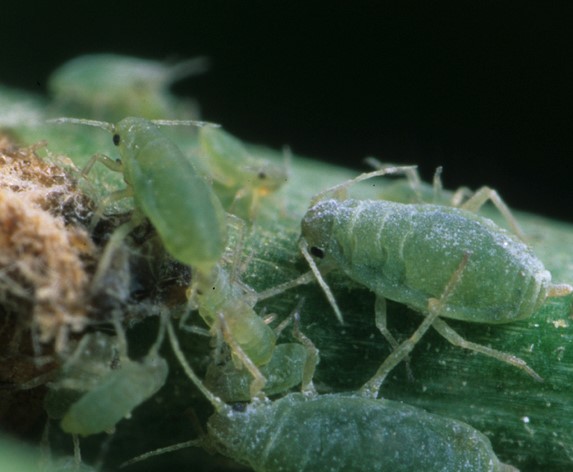
If we pay attention in the garden we can see aphids on plants of different colors. Most of the time the color can tell us the type of aphid species. However, at other times, the colors may change depending on the type of food they have. Therefore, the same species can have several different colors. Below we show you the best known. It is good to know the scientific name of the species because, in this way, if you have more questions you can access more extensive information with the Latin name.
green aphids
- Myzus persicae. Peach aphid. It affects trees of the Prunus genus. It does not usually cause much direct damage but transmits viruses.
- Aphis pomi, present on apple trees causing the leaves to turn yellow. However, the most damaging aphid for the apple tree is a brown aphid (Dysaphis plantaginea), which can deform the fruits.
- Acyrthosiphon pisum. It mainly affects peas and chickpeas. It can also be pink. It is usually located at the ends of the stem and in the organs in formation. They are usually observed before flowering.
- Machosiphum rosae. Present in rose bushes. They can also be red and are characterized by having very long siphons, as we see in the photo.
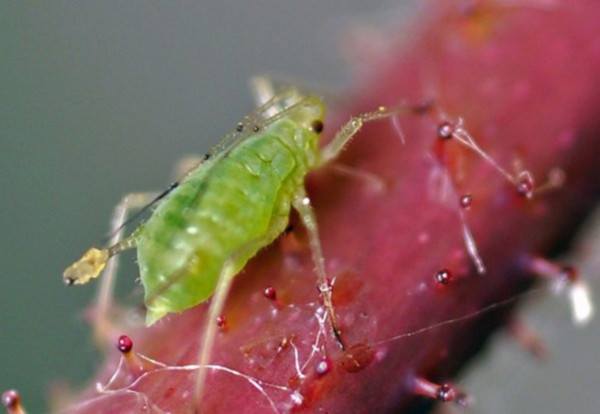
BLACK APHID
- Aphis fabae. Bean or bean aphid. If it is installed too soon, it can cause significant losses. Mild winters and warm springs favor its appearance.
- Brevicoryne brassicae present in cabbage. It produces a kind of wax that gives it a grayish appearance. Normally we can find them in a group. They can cause deformations, discoloration in the leaves and transmission of viruses. As it does not move much it is less dangerous than other species of aphid.
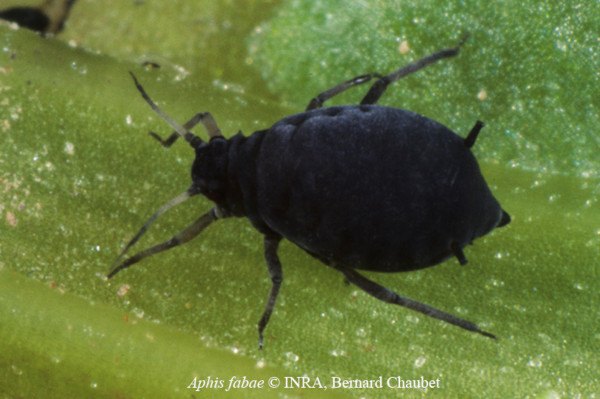
YELLOW APHID OR WHITE APHID
These colors, although they are less common, also exist in the different species of aphids. Of course, we must be careful not to confuse them with other species such as mealybugs or Viteus vitifoliae. This small insect, very similar to the aphid, is responsible for the transmission of phylloxera in the vine. This disease comes from the south of the United States and from 1863 it caused a great viticultural crisis in Europe. It was not until after 30 years that we were able to overcome this crisis by using American rootstocks resistant to this disease.
The yellow strawberry aphid (Chaetosiphon fragaefolii) or raspberry aphid (Aphis idaei) is also well known.
Finally, to finish the list, I still need to name the 3 most common aphids in cereals, which are: Sitobion avenae, Metopolophium dirhodum and Rhopalosiphum padi.
HOW TO ELIMINATE APHIDS AND PREVENT THEIR APPEARANCE
Despite being a common problem, on many occasions we still do not know how to combat the aphid. There are various methods to prevent their appearance or to eliminate them once they have reached our crops. Aphid pests are very dependent on weather conditions and the presence of other insects that can attack them (natural enemies of aphids).
Prevention methods
There is nothing better than prevention. Therefore, from April-May we must pay special attention to our crops. To facilitate the early observation of aphids, especially to detect the arrival of winged aphids, we can make homemade traps. The favorite color of aphids is yellow. There are several options to catch aphids and detect their presence:
- Take a yellow container and fill it with soap and water. In this way the aphids will be attracted by the color and will suffocate.
- Cut pieces (approximately 20 cm) of yellow cardboard and apply oil or rat glue to them. Once prepared, we hang them with threads in our garden.

We can also prepare slurry or maceration of nettles and spray it on the plants as an insect repellent, in addition to favoring their immune system. Approximately 100 grams of nettle per liter of water is recommended. It is also recommended to eliminate weeds and place our crops near aromatic plants that are usually aphid repellents.
Chemical control against aphids
We always have to try to use as little as possible the use of insecticides and carry out an integrated protection against pests. Therefore, if we decide to use insecticides, it is better to do it soon when we see the first colonies of aphids and before the natural enemies arrive. In addition, treatment thresholds (minimum number of aphids per plant) must be respected before applying the product. As many aphids hide under the leaves, the use of systemic insecticides is usually the most effective (these are insecticides that, when applied, penetrate inside the plant through the tissues and, from there, are distributed to all parts). However, special attention should always be paid to insecticides as they cancause resistance in aphids. That is, aphids become resistant to insecticides and no longer cause any effect. Therefore, it is necessary to alternate and combine the different active substances of these products to avoid the appearance of resistance.
Natural enemies of aphids
Biological control of aphids is based on using other insects to help us kill them. We must be careful because the use of insecticides can also kill these beneficial insects for the garden. Therefore, it is better to try to carry out those cultural practices that favor this natural regulation than to apply insecticides. The most effective insects to fight against aphids are:
- Predators: They are those insects that feed directly on aphids. The most common are ladybugs, lacewings, hoverflies, spiders or carabid beetles.
- Parasitoids: They are small wasps that lay eggs inside the aphid where their larvae develop and in this way the aphid will die. It could really be a horror scene in a movie theater for aphids…! If you are good observers and want to know if you have this type of wasp in your garden, you simply have to look for mummified aphids. That is, aphids that do not move and have a small hole through which the wasp came out after feeding on the inside of the aphid. I leave you a photo below.
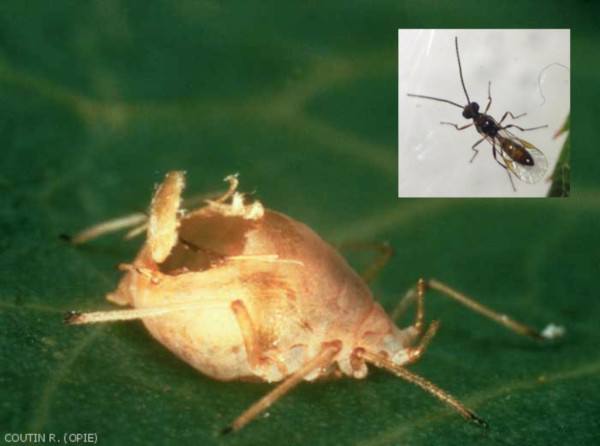
Home remedies to control aphids
As for homemade and ecological methods to kill the aphid, there are plenty. Here we list the most used:
- Infusion of garlic or onion. In both cases, the garlic (5 cloves for 30 minutes) or the onion (1 onion for 5 minutes) are boiled per liter of water. Let cool, strain and spray on plants.
- Surely you have heard of the soapy solution to kill aphids. It is indeed one of the easiest and most effective methods used in the garden. We simply have to dilute a tablespoon of neutral soap in a liter of water and spray.
- We can also apply neem oil, horsetail or tansy.
In this way we can eliminate the aphid in a natural, effective and homemade way, reducing the use of chemical products in our orchards and gardens. You can find more natural remedies for aphids in the post about organic insecticides for garden pests.
References
- Nalam, V., Louis, J., & Shah, J. (2018). Plant defense against aphids, the pest extraordinaire. Plant Science, (April), 1–12.
- Simon, JC, & Peccoud, J. (2018). Rapid evolution of aphid pests in agricultural environments. Current Opinion in Insect Science, 26, 17–24.
- Foottit, RG, & Maw, HELBT-RM in LS (2017). Insects-Aphids. Elsevier.
I hope this article has helped you understand aphids a little better, without a doubt, they are quite special insects. You can ask anything you want in the comments, tell us about your experiences or the home methods you use against aphids.

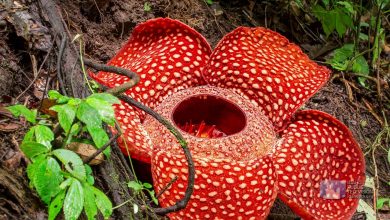
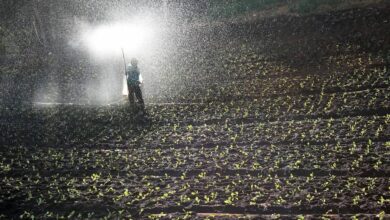
![Photo of Earth Pig: [Characteristics, Detection, Effects and Treatment]](https://www.complete-gardening.com/wp-content/uploads/2022/08/earth-pig-characteristics-detection-effects-and-treatment-390x191.jpg)
